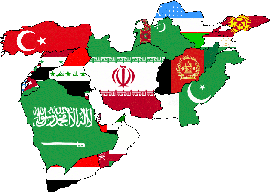
April 11, 2011

Let’s play the “What If?” game for a minute. What if I had written this column in October 2002 and some eagle-eyed aide to George W. Bush had noticed it and shown it to his moron boss? Had the moron read it and taken what I”m about to write into consideration, Uncle Sam might be one trillion dollars richer, thousands of our dead and maimed might still be alive and kicking, and ditto for hundreds of thousands of Iraqi dead.
It’s nice to imagine it, as no one close to George W. would have dreamed of telling their idiot boss the truth”certainly no Fifth Columnist such as Perle, Feith, Wolfowitz, or Abrams, nor the Likud Bobbsey Twins, Kristol and Podhoretz. The great “secret” they kept from the boss was not very complex, nor very secret at all. The Middle East is dominated by the bitter, bloody feud between two branches of Islam”the Sunnis and the Shiites”and this feud has been raging long before baseball, oil, or Texas were invented or discovered. (Bush still had no idea about Sunnis and Shiites well after the fall of Baghdad.) They could have also shown him a book published way back in 1990 by my close American buddy Charles Glass called Tribes With Flags. Glass explains how in the Middle East there are very few real countries”nations such as Egypt, Tunisia, and Iran with strong national identities. He distinguishes these from places which might be called “Tribes with Flags””Libya, Iraq, Jordan, Saudi Arabia, and the Gulf States.
“The Middle East is dominated by the bitter, bloody feud between two branches of Islam”the Sunnis and the Shiites”and this feud has been raging long before baseball, oil, or Texas were invented or discovered.”
Step by step, the way one teaches a child how to read, Bush’s helpers could have explained to him that regime changes and nation-building in the Middle East is a sucker’s game, and that tribes and sects live by their own mottos, with democracy as we understand it not being one of them. It is no accident that the recent rebellions in the Middle East began in real countries with homogenous populations such as Tunisia and Egypt, then spread to Tribes with Flags places, where there is no end in sight.
But let’s start from the top. The roots of the Sunni-Shiite hostility lie not in profound theological differences, but in 7th-century political intrigues in the Muslim world. When the Prophet Mohammed died in 632 AD, the question of the succession to his leadership was dominated by family feuds and rivalries. Essentially there were four candidates to succeed as leader, with Mohammed’s grandson Ali being favored by a large group which called itself Shiites. But others were chosen before him”not once, not twice, but three times. When Ali finally became the fourth caliph, he was quickly assassinated.